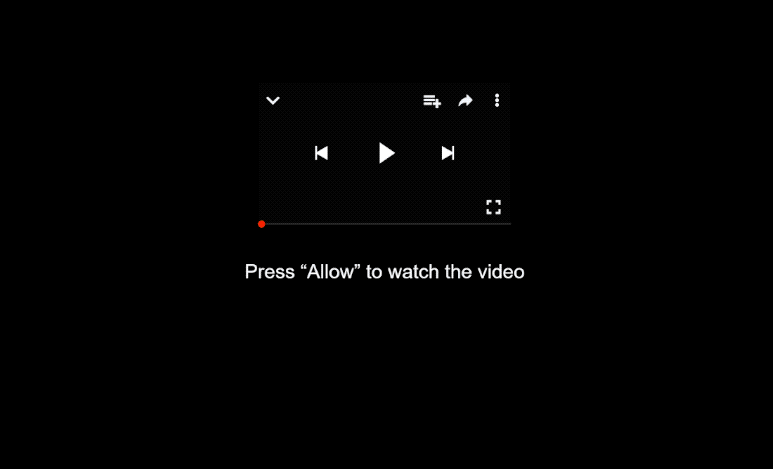Remove tweelessatic.co.in pop-ups
“tweelessatic.co.in wants to show notifications” is an alert you will get when you get redirected to the site. The site is misusing a legitimate browser feature that allows sites to ask for permission to show notifications, which would appear on the desktop. However, while legitimate sites would show useful and even interesting notifications, sites like tweelessatic.co.in simply spam ads that could expose you to dangerous content, including scams and malware.
Some websites exploit this legitimate feature to bombard users with ads. These sites typically show a buffering video and trigger a browser alert that states the site wants to show notifications, “tweelessatic.co.in wants to show notifications” in this case. This suggests that users must allow notifications to watch the videos. This trick may work on users trying to access pirated movies or TV shows, who may be redirected to this site while attempting to play a video.
If you have already allowed tweelessatic.co.in to show notifications, they will appear on the right side of your desktop. We strongly advise against interacting with these ads, as they might expose you to potentially harmful content. Some ads may attempt to deceive you into downloading software or engaging with scam content. It’s best to remove tweelessatic.co.in from the list of sites allowed to show notifications as soon as possible. Follow the instructions provided at the end if you need help with this process.
Random redirects can happen for a few reasons, usually linked to the websites you visit or adware on your device. To determine if adware is responsible, scan your computer using anti-virus software like WiperSoft.
Avoiding an adware infection
The frequency and timing of redirects you experience can indicate whether your computer has adware or if you’re browsing risky websites. If redirects happen only when on certain sites, such as those featuring adult or pirated content, it’s likely the sites themselves are the issue. Many websites are considered high-risk due to the dubious ads they display. Installing an adblocker can help prevent these redirects or close them quickly when they appear. Using an adblocker is generally essential for safe browsing as it effectively filters out most advertisements.
If you are encountering redirects frequently on safe sites, there may be adware on your computer. Adware is a relatively minor form of malware designed to bombard users with advertisements. Many people are caught off guard by adware but they unwittingly installed it themselves. This usually occurs because adware and browser hijackers often come bundled with free programs, a method known as software bundling. These bundled offers can be installed automatically without user consent. Although these offers are technically optional, users who don’t pay close attention during the installation process usually don’t notice them.
To correctly install free programs, opt for the Advanced (Custom) installation settings. If you select Default, all additional offers will remain hidden and be installed automatically. Advanced settings will display all the bundled offers, allowing you to uncheck any you don’t want to install. You need to deselect all offers, even those that may appear useful.
tweelessatic.co.in removal
It’s clear that not every website should be allowed to show notifications to your desktop. If you’ve accidentally granted this permission to tweelessatic.co.in, you’ll want to remove it from your list of sites with notification permissions. This process is straightforward, but if you’re uncertain about how to navigate your browser settings, follow the instructions below for assistance.
- For Mozilla Firefox: Open the menu (the three bars top-right corner) -> Options -> Privacy & Security. Scroll down to Permissions, press on Settings next to Notifications, and remove tweelessatic.co.in and any other questionable websites. You can permanently turn off these notification requests by checking the “Block new requests asking to allow notifications” box in the same Notifications settings.
- For Google Chrome: Open the menu (the three dots top-right corner) -> Settings -> Privacy and security -> Site Settings. Click on Notifications under Permissions, and remove tweelessatic.co.in and any other questionable websites. You can stop these notification requests permanently by toggling off “Sites can ask to send notifications”.
- For Microsoft Edge: Open the menu (the three dots top-right corner) -> Settings -> Cookies and site permissions -> Notifications. Review which sites have permission and remove tweelessatic.co.in and any other questionable websites. You can permanently turn off these notification requests by toggling off “Ask before sending”.
It’s a good idea to run a scan of your computer using anti-virus software to check for potential adware that might be causing redirects. A tool like WiperSoft can effectively remove any adware related to tweelessatic.co.in. If your scan comes back clean, or if you’re only experiencing redirects on specific high-risk sites, consider installing an adblocker program. This can help prevent redirects completely or at least reduce the number of pop-ups you encounter.
Site Disclaimer
WiperSoft.com is not sponsored, affiliated, linked to or owned by malware developers or distributors that are referred to in this article. The article does NOT endorse or promote malicious programs. The intention behind it is to present useful information that will help users to detect and eliminate malware from their computer by using WiperSoft and/or the manual removal guide.
The article should only be used for educational purposes. If you follow the instructions provided in the article, you agree to be bound by this disclaimer. We do not guarantee that the article will aid you in completely removing the malware from your PC. Malicious programs are constantly developing, which is why it is not always easy or possible to clean the computer by using only the manual removal guide.

